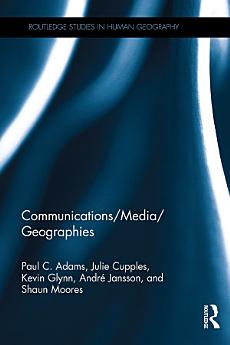Communications/Media/Geographies
About this ebook
One significant aspect of this discussion is a spirited debate about the sort of interdisciplinary area that might emerge as a focus for future work. Does the already-established idea of communication geography offer the best way forward? If so, what would applied or critical forms of communication geography be concerned to do? Could communication geography benefit from the sorts of conjunctural analysis that have been developed in contemporary cultural studies? Might a further way forward be to imagine an interdisciplinary field of everyday-life studies, which would draw critically on non-representational theories of practice and movement?
Readers of Communications/Media/Geographies are invited to join the debate, thinking through such questions for themselves, and the themes that are explored in this book (for example, of space, place, meaning, power, and ethics) will be of interest not only to academics in human geography and in media and communication studies, but also to a wider range of scholars from across the humanities and social sciences.
About the author
Paul C. Adams is Professor of Geography at the University of Texas at Austin, USA.
Julie Cupples is Reader in Human Geography and Co-director of the Global Development Academy at the University of Edinburgh, UK.
Kevin Glynn teaches in the Media Studies program at Massey University in Wellington, New Zealand.
André Jansson is Professor of Media and Communication Studies and Director of the Geomedia Research Group at Karlstad University, Sweden.
Shaun Moores is Professor of Media and Communications at the Centre for Research in Media and Cultural Studies, University of Sunderland, UK.






